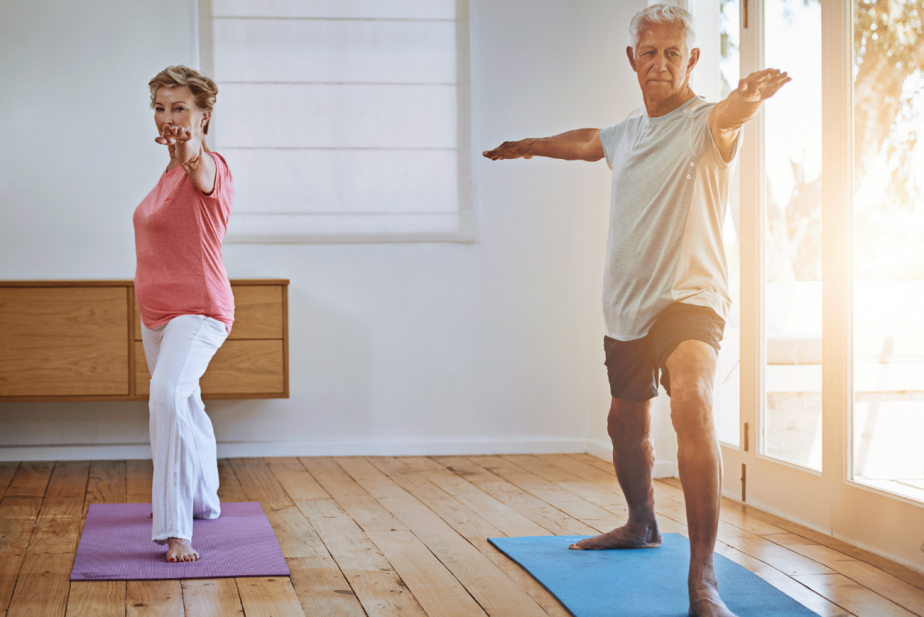Each year, more than one in four older adults take a fall, but less than half tell their doctor. After the first fall, the chances of falling again double. According to Wikipedia, the fear of falling (FOF) is natural in most humans and animals. It was merely believed to be a result of the psychological trauma of the fall, also called the “post-fall syndrome.” Only titled in 1982, this syndrome has gained recognition as a health problem with seniors, many of whom have never experienced a fall. It seems older women are more prone to this issue. Risk factors that elevate such a fear include inactivity, loss of strength, dizziness, gait problems and the lack of ability to balance while standing.
By the year 2025, as many as 70 million adults will be considered mature seniors. Experts state that 60% of the 70 million, will take a fall resulting in head trauma or broken bones (1 in 5), tissue damage and hip fractures, thus increasing what is called post-fall syndrome or a fear to continue normal activity. Activities that involve a lot of movement like yard work, playing with children, biking or fitness walking will be replaced with activities that involve sitting, reading, watching tv and playing cards. Most will then experience a loss of heart, bone, and muscle strength, as well as decreased independence, socialization, and overall quality of life. The bottom line is all these physical activities require a balance challenge, one in which there is contraction and coordination of muscles on all sides of the joint, allowing the body to function in the standing position.
According to the Centers for Disease Control, for people over 65 years old, the most common cause of injury and the number one reason for admission to a hospital comes from injuries sustained in a fall. The Centers for Disease Control (CDC) state that if balance is not challenged daily, then weakness can cause the fall. When it comes to prevention, maintaining independence, and enjoying a high quality of life, the focus is on increasing the strength of two major muscle groups: the legs and the core. Walking, going up stairs, getting in and out of the car, and stepping up and off a curb, causes the lower body to do the work. Stabilization is needed for rising from a chair or picking up an object from the floor, the torso (core) muscles are working. Many of our activities of daily life and gait assistance require strength and core training from the glutes. When you partner the two muscle groups, they work to prevent falling and assist in getting up off the ground.
The American College of Sports Medicine (ACSM) recommends that the mature adult participate in a strength training routine that includes as many as 6-8 exercises, working in opposition, at least 2-3 times per week. It is also recommended that muscles work unilaterally and address balance challenges while anchored on one foot. The need for flexibility training needs to remain a focus, as well as stretching the hip flexors and calf muscles, while strengthening the glutes and hamstrings. ACSM also recommends that the senior adult practice both dynamic and static patterns to assure the ability to function performing activities of daily life.
One of the most advantageous environments for keying in on these recommendations is in the pool. Training in the water provides aquatic properties, plus it acts as a cushion if the participant falls, allowing the buoyancy to keep them upright. Glute training in a pool is highly beneficial for preventing falls on land.
Here are a few ways to train BALANCE skills in the pool:
- Static single leg stances
- Dynamic single leg movement patterns
- Performing moves that alternate between anchored or grounded and rebounding
- Creating patterns that include a change in direction or visual focus
- Using music cueing and coaching techniques that recruit a response
Why train in the WATER?
- Participants experience less fear of falling when supported by buoyancy during water exercise. It allows for more aggressive movement and leads to an increase in strength in a shorter period than on land
- Participants experience a sense of independence while in the water and are open to socialization with others during a scheduled group class
- Training in all planes of motion; sagittal, frontal, and transverse, help increase functional ability when on land
- Participants work with an increased range of motion at each joint or articulation when performing repetitions in opposition to the water
Falling doesn’t need to be as scary as it seems. Knowing how to train the muscles and joints helps to calm the fear, plus it creates activity and movement for the mature adult. Buoyancy provides a sense of security and confidence. Improvements can be seen in participants who strengthen two to three times a week in a water. So, take the next step to increase balance and increase strength in the legs, hips, and core in the pool and overcome the fear of falling for good.

